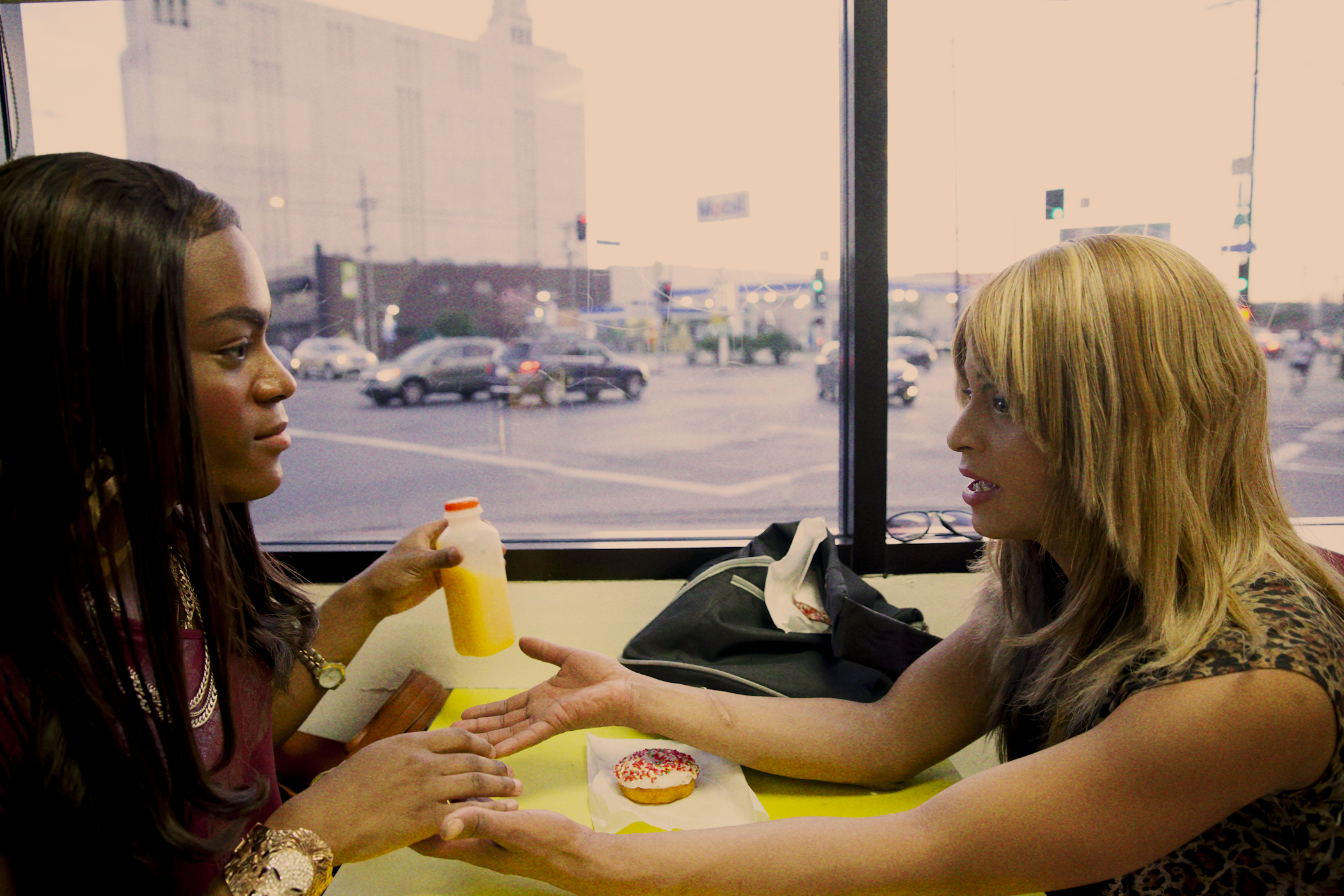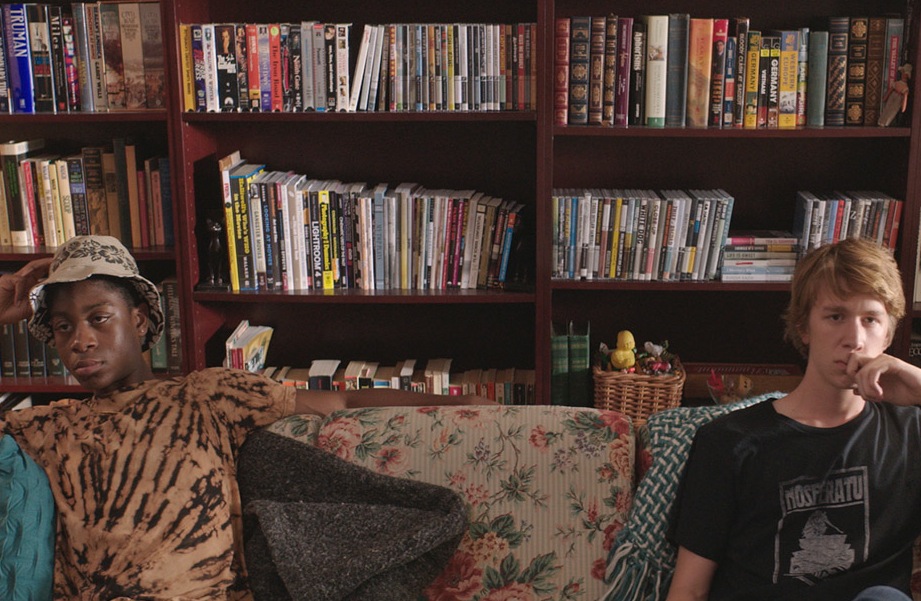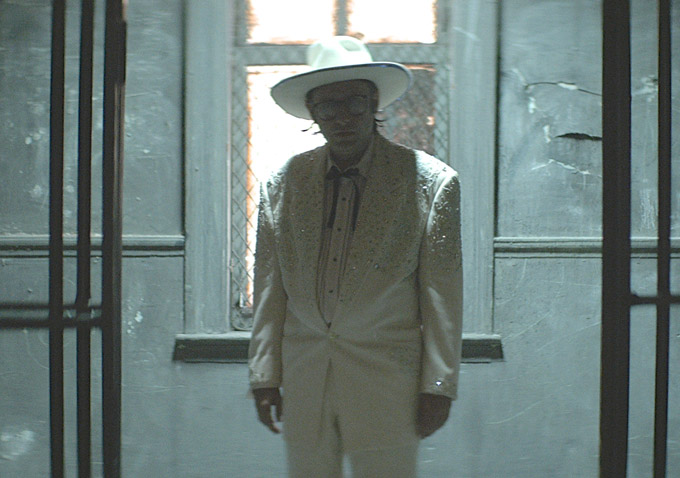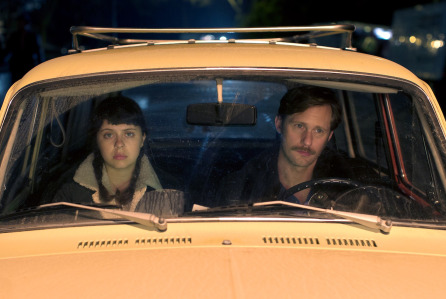By providing your information, you agree to our Terms of Use and our Privacy Policy. We use vendors that may also process your information to help provide our services. This site is protected by reCAPTCHA Enterprise and the Google Privacy Policy and Terms of Service apply.
Critic’s Notebook: Why This Year’s Sundance Revealed an Exciting Stage for American Movies
Eric Kohn

With its mega-million-dollar production values and a long-eared Channing Tatum as an alien bodyguard hurtling through the solar system, alongside a smitten Mila Kunis batting her eyelashes in search of a plot, “Jupiter Ascending” felt noticeably out of place at a festival allegedly designed to operate outside the constraints of Hollywood. By that same token, however, Sundance has long been seen as a feeding ground for new talent with the potential to go mainstream, as Groth pointed out: The Wachowskis began their careers at Sundance nearly 20 years ago with their magnificent lesbian noir “Bound,” a discovery of the 1996 festival that paved the way for “The Matrix” a few years later and everything that came next.
But that was then. This is now — and while it may not have been the best year in ages terms of major discoveries, the variety of strong work from filmmakers working in different modes suggests a broader definition of the Sundance breakout story. While a handful of new movies may introduce promising storytellers with the potential to create work on a larger scale, even more impressive achievements surrounded the movies produced by directors a few years into their careers, creating work that transcends commercial expectations. Few of them are likely to return in two decades with their own “Jupiter Ascending.”
Me and Earl and the Usual Story
 But make no mistake: There were traditional Sundance discoveries, and the accompanying bidding wars and wild speculation on million-dollar price tags that entails. Chief among them was “Me and Earl and the Dying Girl,” a cheery riff on the cancer movie formula that pleased crowds in traditional Sundance fashion. Alfonso Gomez-Rejon’s tale of a teen movie geek (Thomas Mann, agreeably sarcastic in a role that bodes well for his next steps) forced to bond with an ailing neighborhood classmate, features some impressive camerawork and imaginative animation sequences that enliven its main character’s endearing relationship to his world through the filter of the movies.
But make no mistake: There were traditional Sundance discoveries, and the accompanying bidding wars and wild speculation on million-dollar price tags that entails. Chief among them was “Me and Earl and the Dying Girl,” a cheery riff on the cancer movie formula that pleased crowds in traditional Sundance fashion. Alfonso Gomez-Rejon’s tale of a teen movie geek (Thomas Mann, agreeably sarcastic in a role that bodes well for his next steps) forced to bond with an ailing neighborhood classmate, features some impressive camerawork and imaginative animation sequences that enliven its main character’s endearing relationship to his world through the filter of the movies.
Comparisons to “The Fault in Our Stars,” which may have aided an eventual sale to Fox Searchlight,” sound about right: “Me and Earl and the Dying Girl” shifts the focus to the male lead and features a cannier, self-aware attitude toward its inevitable sentimental climax, but once it gets there, the premise sags into formulaic expectations. Most problematically, the narrative fails to emphasize its best ingredient — the titular Earl (RJ Cyler), the protagonist’s laid-back black friend, who takes the dying girl’s plight with a casual disposition and philosophical clarity his friend sorely lacks. If the movie dropped “Me,” it would automatically smarten up.
But then it wouldn’t be the traditional Sundance breakthrough. Last year the honors went to “Whiplash,” and now the pantheon of crowdpleasers involving young white men confronting the hardships of young adulthood has a new reigning champion. That’s not a knock on either “Whiplash” or “Earl,” both of which offer slick, enjoyable filmmaking that transcends the limitations of their stories. But the Sundance lineup casts a much wider net beyond the obvious focal points — and it’s here that this year’s edition truly excelled at demonstrating the emergence of a phase in American movies.
Fresh Faces and Familiar Names
 The best entries at Sundance emphasized unorthodox faces and situations that hardly scream for mass market appeal, produced by filmmakers who have steadily built a track record for delivering on those qualities in recent years. At the top of this list lies “Tangerine,” the latest charming narrative from the relentlessly innovative director Sean Baker, who frequently works with non-professional actors to develop lively stories about their under-represented lives. Shot on an iPhone 5, “Tangerine” follows a pair of energetic transgender prostitutes (Mya Taylor and Kitana Kiki Rodriguez) dealing with a series of comedically engaging misadventures on Christmas Eve. Taylor and Rodriguez give their characters more charm and exuberance than many more experienced actors could have brought to the roles, while Baker’s intentionally scrappy technique enlivens the realism beneath their plight. The director melds their world with mainstream tropes while grounding it in naturalism.
The best entries at Sundance emphasized unorthodox faces and situations that hardly scream for mass market appeal, produced by filmmakers who have steadily built a track record for delivering on those qualities in recent years. At the top of this list lies “Tangerine,” the latest charming narrative from the relentlessly innovative director Sean Baker, who frequently works with non-professional actors to develop lively stories about their under-represented lives. Shot on an iPhone 5, “Tangerine” follows a pair of energetic transgender prostitutes (Mya Taylor and Kitana Kiki Rodriguez) dealing with a series of comedically engaging misadventures on Christmas Eve. Taylor and Rodriguez give their characters more charm and exuberance than many more experienced actors could have brought to the roles, while Baker’s intentionally scrappy technique enlivens the realism beneath their plight. The director melds their world with mainstream tropes while grounding it in naturalism.
Less of a crowdpleaser but also a welcome jolt of unconventional storytelling, Rick Alverson’s “Entertainment” proved that the director of the similarly assaultive “The Comedy” had yet to compromise his daring approach. “Entertainment” features the plight of a comedian played by the abrasive Neil Hamburger as he drifts from one dead-end gig to another in the middle of the desert, repeating the trope ad infinitum in a fascinating examination of the psychological toll involved in even the most absurd form of human spectacle.
 Baker and Alverson didn’t come out of nowhere at this year’s festival, but their achievements both confirmed the singularity of their visions, which lie confidently beyond the limitations of mainstream commercial cinema. Another name associated with this tendency is the New York collective known as Borderline Films, whose introspective thrillers “Martha Marcy May Marlene” and “Simon Killer” both examined troubled minds from the inside out. Longtime Borderline producer Josh Mond made his directorial debut at Sundance this year with “James White,” a startlingly effective portrait of its young protagonist (Christopher Abbott) coping with his cancer-stricken mother (Cynthia Nixon) on her deathbed. A welcome antidote to the superfluous cheeriness of the cancer plot in “Me and Earl and the Dying Girl,” Mond’s story is both grim and quietly life-affirming, reflecting the divisive process of its main character’s wandering mind.
Baker and Alverson didn’t come out of nowhere at this year’s festival, but their achievements both confirmed the singularity of their visions, which lie confidently beyond the limitations of mainstream commercial cinema. Another name associated with this tendency is the New York collective known as Borderline Films, whose introspective thrillers “Martha Marcy May Marlene” and “Simon Killer” both examined troubled minds from the inside out. Longtime Borderline producer Josh Mond made his directorial debut at Sundance this year with “James White,” a startlingly effective portrait of its young protagonist (Christopher Abbott) coping with his cancer-stricken mother (Cynthia Nixon) on her deathbed. A welcome antidote to the superfluous cheeriness of the cancer plot in “Me and Earl and the Dying Girl,” Mond’s story is both grim and quietly life-affirming, reflecting the divisive process of its main character’s wandering mind.
Notably, all three of these memorable Sundance titles — “Tangerine,” “Entertainment” and “James White” — wound up in Sundance’s increasingly vital NEXT section, which offers precisely the sort of original narrative content and techniques that should in theory dominate the festival. But they weren’t the whole story.
Regulars Make Commercial Advances
 Fortunately, notwithstanding the “Earl” sale, the commerciality of the U.S. competition held more promise than usual. Magnolia Pictures picked up “Results,” Andrew Bujalski’s deadpan look at a pair of trainers grappling with their life goals, sight unseen. The movie features hilariously muted turns by Guy Pearce and a portly Kevin Corrigan—as the affluent, lazy benefactor of Pearce’s gym—and while this gently appealing but lightweight story may not give the perceptive Bujalski his best outlet for innovation (see his previous effort “Computer Chess” for that), it’s still inspiring to watch a director of his caliber make some advances in the commercial sphere. “Results” provides an antidote to bland romcom formula, and if it brings Bujalski’s perceptive technique to more people, Sundance has done some good.
Fortunately, notwithstanding the “Earl” sale, the commerciality of the U.S. competition held more promise than usual. Magnolia Pictures picked up “Results,” Andrew Bujalski’s deadpan look at a pair of trainers grappling with their life goals, sight unseen. The movie features hilariously muted turns by Guy Pearce and a portly Kevin Corrigan—as the affluent, lazy benefactor of Pearce’s gym—and while this gently appealing but lightweight story may not give the perceptive Bujalski his best outlet for innovation (see his previous effort “Computer Chess” for that), it’s still inspiring to watch a director of his caliber make some advances in the commercial sphere. “Results” provides an antidote to bland romcom formula, and if it brings Bujalski’s perceptive technique to more people, Sundance has done some good.
A few years ago, in the days of Bujalski’s earlier efforts such as “Mutual Appreciation” and “Beeswax,” it was virtually unthinkable that the filmmaker could make his way to Sundance: Their meandering qualities spoke to a limited audience. But with Bujalski and peers such as Joe Swanberg (who this year premiered “Digging for Fire,” which sold to The Orchard at Sundance) now making solid movies with stars and more outwardly commercial formulas, American filmmakers once seen as operating on the margins of U.S. cinema have made their way into the establishment while maintaining their unique appeal. Not for nothing did sibling directors Mark and Jay Duplass came to Sundance 10 years after their indie breakout “The Puffy Chair” as producers on three well-received projects—”Tangerine,” the sex comedy “The Overnight” and opening night romp “The Bronze”—while announcing a four-picture deal with Netflix. Their presence was one of many indicators of a more integrated independent film community. Rather than graduating to the big league, these filmmakers have invented their own version it.
Different Tropes, Familiar Folks
 The greatest discovery of the 2015 Sundance Film Festival was “The Diary of a Teenage Girl,” writer-director Marielle Heller’s terrific adaptation of Phoebe Gloeckner’s graphic novel. The 1970’s-set tale of a young woman (Bel Powley, in a raw and spirited performance that suggests early Maggie Gyllenhaal) who engages in a clandestine affair with her mother’s boyfriend (Alexander Skarsgard). With its alternately funny and unsettling treatment of the liaison’s ever-changing trajectory, “Diary” offers a shrewd riff on the coming of age formula that so often dominates Sundance hype. It’s smarter, darker and more ambiguous. Park City has hosted stories along these lines before, but “Diary” exceeds expectations for them.
The greatest discovery of the 2015 Sundance Film Festival was “The Diary of a Teenage Girl,” writer-director Marielle Heller’s terrific adaptation of Phoebe Gloeckner’s graphic novel. The 1970’s-set tale of a young woman (Bel Powley, in a raw and spirited performance that suggests early Maggie Gyllenhaal) who engages in a clandestine affair with her mother’s boyfriend (Alexander Skarsgard). With its alternately funny and unsettling treatment of the liaison’s ever-changing trajectory, “Diary” offers a shrewd riff on the coming of age formula that so often dominates Sundance hype. It’s smarter, darker and more ambiguous. Park City has hosted stories along these lines before, but “Diary” exceeds expectations for them.
So does “Dope,” Rick Famiguya’s uneven but largely enjoyable tale of another teen over his head, in this case a young black man intent on going to college who inadvertently finds himself at the center of a menacing drug deal. Snazzy and loaded with witty one-liners, “Dope” may not be the panacea for the dearth of racial diversity in contemporary American cinema, but it continues the process of addressing the problem with an enjoyably defiant air.
Meanwhile, Craig Zobel’s beautifully elegiac “Z for Zachariah,” a minimalist post-apocalyptic tale featuring Chiwetel Ejiofor and Chris Pine circling an alienated woman (Margot Robbie) in her vacant farm house deals with rich themes of racial tension and sexual competition through its quietly appealing textures under the guise of a science fiction tale. Zobel, a Sundance regular who first landed here with “Great World of Sound” in 2007, has made his first starry effort with a keen eye for tonal specificity. The movie plays like Terrence Malick by way of “Jules and Jim” — a romance that’s at once introspective and melodramatic, it’s a patient, detailed work that offers yet another alternative to safer formulas.
 Along similar lines, Robert Eggers’ astoundingly frightening “The Witch” takes a fairly basic scenario — 1600’s-era family lives in the woods and encounters ominous forces — and turns it into a fresh, uniquely creepy look at familial dysfunction and growing up. Using materials from the era to create a heightened sense of authenticity, Eggers grounds his supernatural tale in a form of familiarity that heightens the dread. It’s one of the most impressive debuts in years: a movie that gives us something we’ve seen before with a confidence that reinvents its appeal.
Along similar lines, Robert Eggers’ astoundingly frightening “The Witch” takes a fairly basic scenario — 1600’s-era family lives in the woods and encounters ominous forces — and turns it into a fresh, uniquely creepy look at familial dysfunction and growing up. Using materials from the era to create a heightened sense of authenticity, Eggers grounds his supernatural tale in a form of familiarity that heightens the dread. It’s one of the most impressive debuts in years: a movie that gives us something we’ve seen before with a confidence that reinvents its appeal.
Some of the predictable material was better than one might assume: Another Swanberg, Joe’s wife Kris, arrived in competition with the traditional but well-executed “Unexpected,” the story of a young high school guidance counselor who insists on helping a pregnant teenager apply to college. Kris Swanberg’s earlier films, which include the tender 2009 travelogue “It Was Great, But I Was Ready to Come Home,” have shown a perceptive eye but featured relatively thin storylines; “Unexpected” is comparatively mainstream, but it’s a savvy version of it. While Cobie Smulders offers a believable turn as the good-natured counselor, who herself winds up pregnant and questioning her long-term goals, newcomer Gail Bean does an especially proficient job as the black teen on the receiving end of Smulders’ support. The sweet, conventional story arc feels quietly progressive in its ability to deal with class barriers in a credibly down-to-earth fashion. It’s promising to find that one of the most conventional movies in Sundance competition still attempts to provide an alternative to dominant American movies.
Shocking the System
 But some of the best movies at Sundance are unlikely to come to any theaters near you. Stick figure mastermind Don Hertzfeldt’s animated “World of Tomorrow,” which won the Grand Jury Prize of the short films earlier in the week, follows the psychedelic experiences of a young woman contacted by her clone from an alienated future in which time travel and other technological advancements have yielded an empty, disconnected society. One of the rare uses of bright, colorful techniques in Hertzfeldt’s filmography, “World of Tomorrow” blends the playfully bleak outlook on mortality found throughout Hertzfeldt’s oeuvre with a vivid imagination. It’s always exciting to see filmmakers like Hertzfeldt, year after year, delivering original, visionary work that lies squarely outside of traditional marketplace expectations.
But some of the best movies at Sundance are unlikely to come to any theaters near you. Stick figure mastermind Don Hertzfeldt’s animated “World of Tomorrow,” which won the Grand Jury Prize of the short films earlier in the week, follows the psychedelic experiences of a young woman contacted by her clone from an alienated future in which time travel and other technological advancements have yielded an empty, disconnected society. One of the rare uses of bright, colorful techniques in Hertzfeldt’s filmography, “World of Tomorrow” blends the playfully bleak outlook on mortality found throughout Hertzfeldt’s oeuvre with a vivid imagination. It’s always exciting to see filmmakers like Hertzfeldt, year after year, delivering original, visionary work that lies squarely outside of traditional marketplace expectations.
The same appealing traits could be found with Guy Maddin’s “The Forbidden Room.” The Canadian director’s outlandish collage of several overlapping surrealist narratives defies any precise definition: men trapped in a submarine, sacrifices to volcano gods, escapes from captivity by way of dreaming, an educational film about bathtubs, all rendered in expressionistic colors and a moody sound design. “The Forbidden Room” runs too long and takes a few too many inexplicable twists, but its deranged, labyrinthine plotting never loses its connection to a purpose — cinema, liberated from the tyranny of any expectations outside of the people making it on their own terms.
 And it’s that artistic confidence, more than any major sale, that made the best Sundance titles stand out. If the success of “Me and Earl and the Dying Girl” plays into traditional Sundance mythology, Sebastian Silva’s “Nasty Baby” delivers a naughty rebuke to it. Silva, a Sundance regular whose “The Maid” and “Old Cats” were terrific black comedies about domestic lives gone awry, returns to form following the uneven Michael Cera vehicles “Crystal Fairy” and “Magic Magic.” Those movies, which both landed at Sundance two years ago, showed two sides of the director’s tendencies: loopy comedy and a mysterious sense of dread surrounding human behavior. “Nasty Baby” brilliantly combines those two qualities to offer a wry examination of urban life and privilege from the inside out.
And it’s that artistic confidence, more than any major sale, that made the best Sundance titles stand out. If the success of “Me and Earl and the Dying Girl” plays into traditional Sundance mythology, Sebastian Silva’s “Nasty Baby” delivers a naughty rebuke to it. Silva, a Sundance regular whose “The Maid” and “Old Cats” were terrific black comedies about domestic lives gone awry, returns to form following the uneven Michael Cera vehicles “Crystal Fairy” and “Magic Magic.” Those movies, which both landed at Sundance two years ago, showed two sides of the director’s tendencies: loopy comedy and a mysterious sense of dread surrounding human behavior. “Nasty Baby” brilliantly combines those two qualities to offer a wry examination of urban life and privilege from the inside out.
Initially, the movie focuses on Brooklyn performance artist Freddy (Silva) who desperately wants to have a baby with his best friend (Kristen Wiig) and his partner (Tunde Adebimpe). At the same time, Freddy plans an absurdly over-the-top installation piece involving nudity and baby sounds to express the topic on his mind. It’s all a bit grating in its straightforward, blithe depiction of self-involved city dwellers until a shocking third act twist that calls into question the stability of everything leading up to it.
 One of the most exciting aspects of “Nasty Baby” playing at Sundance was the divisive response it inspired from many audiences. Some were eager to embrace the relatively tame story of aspirational parenthood that dominates its earlier scenes, and rebelled against the darker events by walking out of the theaters. Others, like me, perked up and smiled. The movie was a slap in the face to anyone who felt smarter than its easygoing charms.
One of the most exciting aspects of “Nasty Baby” playing at Sundance was the divisive response it inspired from many audiences. Some were eager to embrace the relatively tame story of aspirational parenthood that dominates its earlier scenes, and rebelled against the darker events by walking out of the theaters. Others, like me, perked up and smiled. The movie was a slap in the face to anyone who felt smarter than its easygoing charms.
“Nasty Baby” epitomizes the sneaky appeal of Sundance that lies beyond its obvious hooks: No matter the simplistic assumptions surrounding the most popular titles, there are always surprises lurking in every category. These diverse options reflect today’s cluttered times, when customization has greater value than ever before. The variability of Sundance quality meant that it was a healthy year for every sensibility if you knew where to look. Deals may still rule perceptions of Sundance’s appeal, but the program tells a different story — or, rather, many of them at once.
By providing your information, you agree to our Terms of Use and our Privacy Policy. We use vendors that may also process your information to help provide our services. This site is protected by reCAPTCHA Enterprise and the Google Privacy Policy and Terms of Service apply.
















